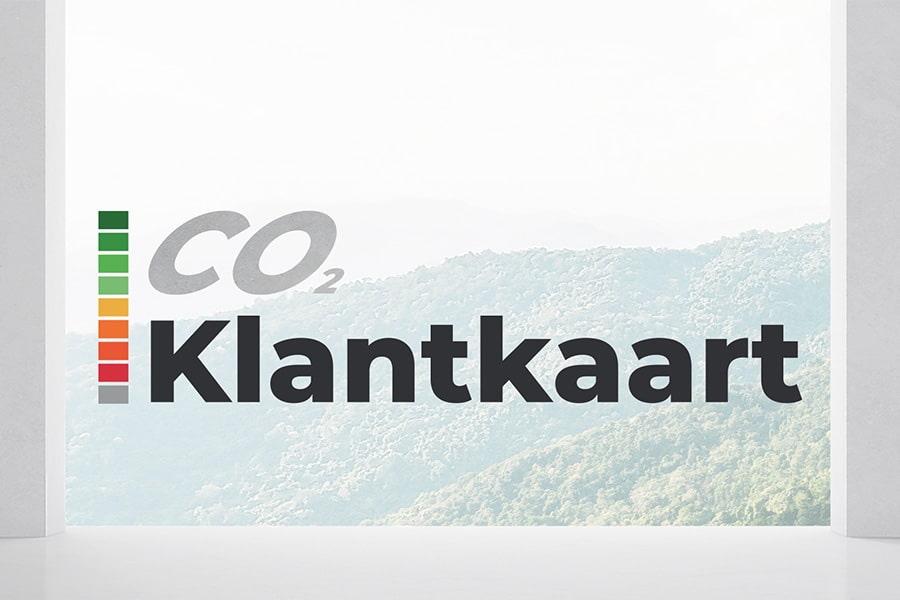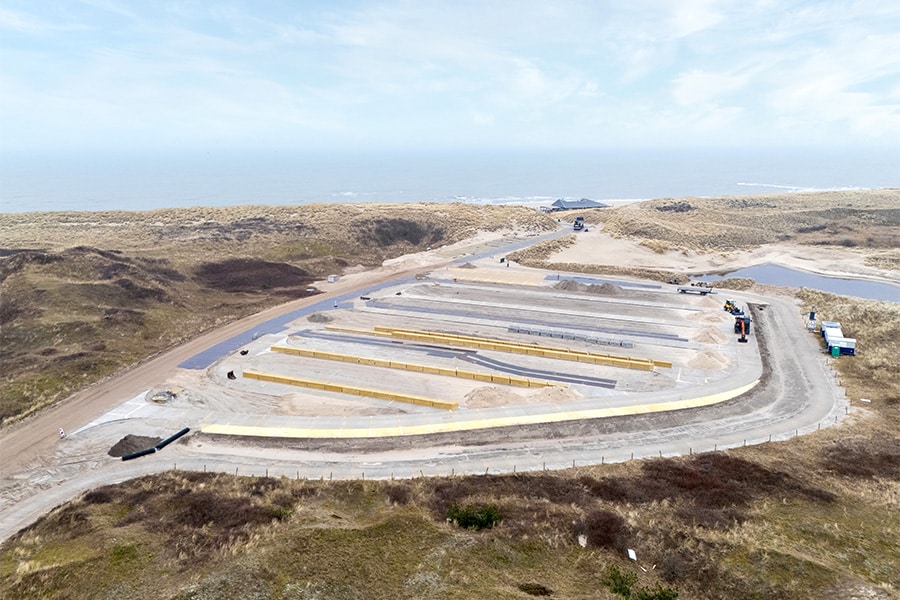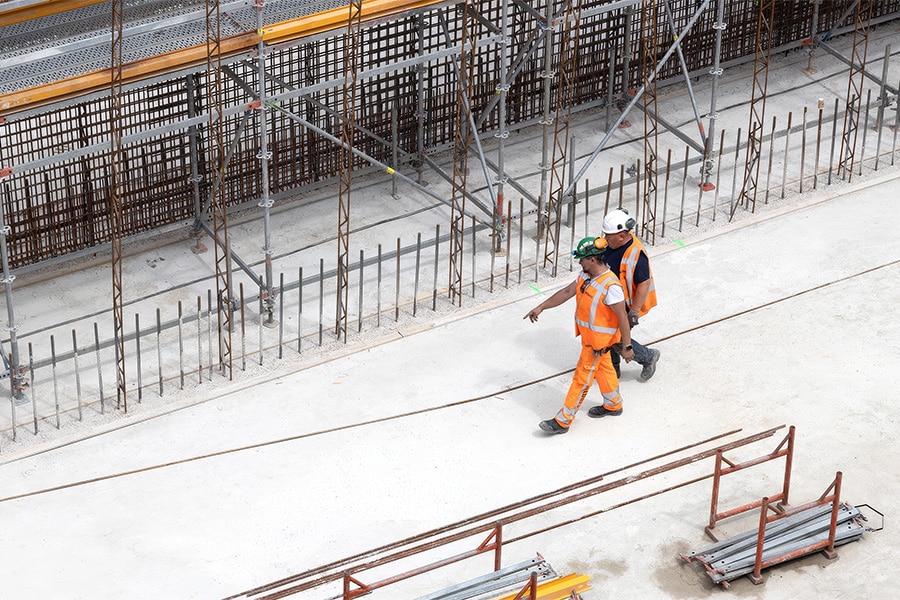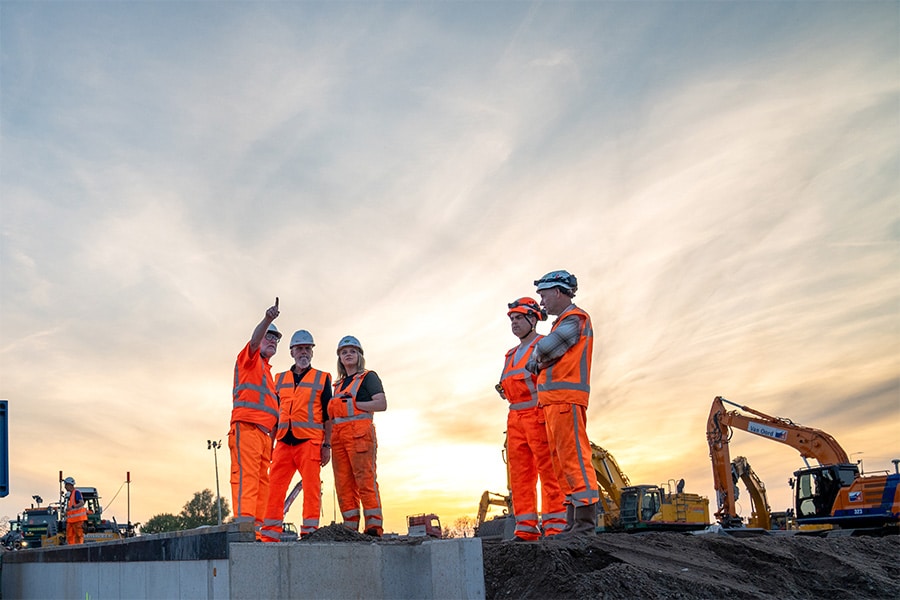
Replaced KW58 overpass is impressive finale to The Green Arch
The existing viaduct in the A16, over the Hoofdweg in Rotterdam (KW58) is no longer satisfactory. The idea was to repair the structure. In the end, this turned out not to be feasible. It was therefore decided to replace the viaduct in its entirety. But in such a way that through traffic is hindered as little as possible. An operation that must also be carried out in record time in order to meet the planned opening of the A16 Rotterdam at the end of 2025. De Groene Boog is carrying out the replacement on behalf of Rijkswaterstaat.
KW58 was built in the 1960s and was struggling with cracking on the underside of the structure. "Based on archive drawings, we calculated whether the structure could continue to fulfill its function, taking into account the current traffic load and intensity," says Jaco van Duijn, KW58 project manager at De Groene Boog. "Soon we came to the conclusion that something more was really going on and that the viaduct no longer met current requirements. There was a risk of brittle fracture, where the deck could collapse all at once. Therefore, in a short period of time, the plan was developed to place a passive support structure under it, as a precautionary measure. An axle load restriction was also put in place for truck traffic heavier than 100 tons."
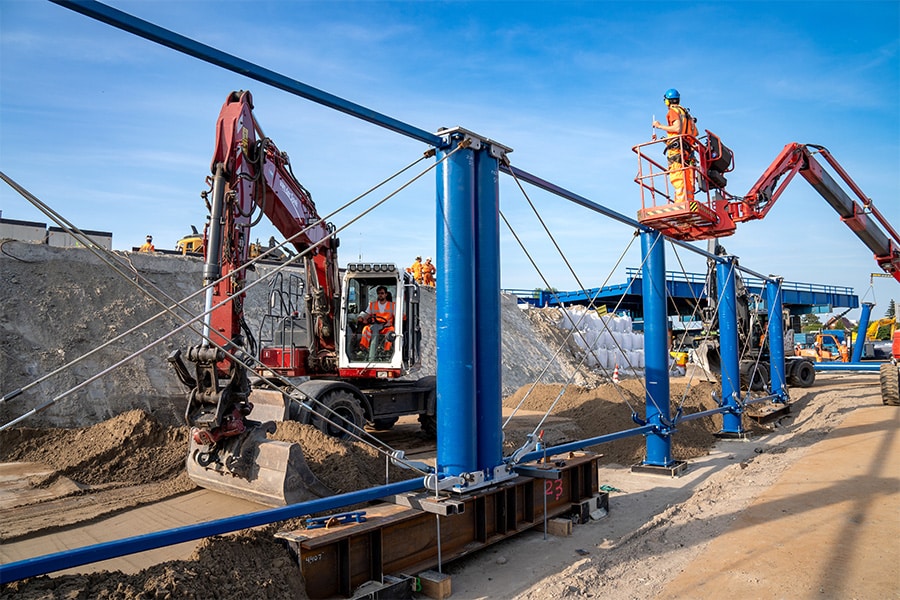
Collapse hazard
The support structure was installed a few millimeters below the deck in mid-2022. "The idea behind this was that if the deck collapsed, it would not lead to a calamity," explains Pieter Deleu, KW58 project coordinator at De Groene Boog. "Traffic could then be taken off the structure in a safe way." The support structure has since been removed and traffic on the A16 has been diverted via two auxiliary bridges over the Main Road since early May this year. Pieter: "Parallel to the installation of the support structure, we started a process with Rijkswaterstaat to devise a construction method that would enable us to replace the existing structure efficiently, without causing too much disruption to through traffic on both the A16 and the Hoofdweg. Various solution options were reviewed, including even the complete closure of the A16 for a few weeks. This would involve demolishing the old viaduct and rebuilding the new one. But that caused too much inconvenience and proved undesirable at a location near one of the busiest traffic junctions in the country. In the end, a solution with a road relocation and auxiliary bridges was chosen."
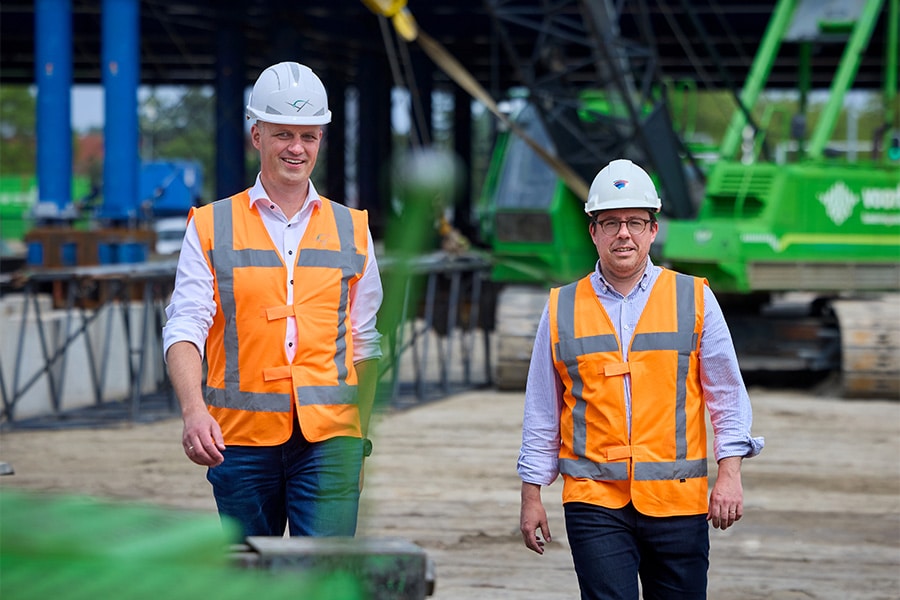
Foresight
The existing viaduct had four lanes toward the Van Brienenoord Bridge with an entrance ramp from Main Road. In the northern direction there were also four lanes and an exit to the Hoofdweg. There was also already provision for a wide middle deck for the future connection of the A16 Rotterdam with the viaduct over the Terbregseplein. "So people already had foresight during the construction of the viaduct," says Jaco. "Only that middle deck was never used." The new structure will have the same layout, but with only one center support instead of three intermediate supports.
So in order to build the new structure at all, the existing structure had to be demolished first. And this was preceded by the necessary phasing so that the A16 did not have to be closed for long periods of time. "In July 2023 we started the construction of a road relocation on the west side of the existing viaduct with a giant auxiliary bridge by Retro Bridge (TK58) over the Main Road. Since Monday, April 29, 2024, southbound traffic has been traveling over this road relocation and thus will not experience any disruption until the end of the work. Traffic will soon be converted to the new viaduct in one go. The only disadvantage to this phasing is that the driveway from Hoofdweg (27, Prins Alexander) will be eliminated for a longer period of time."
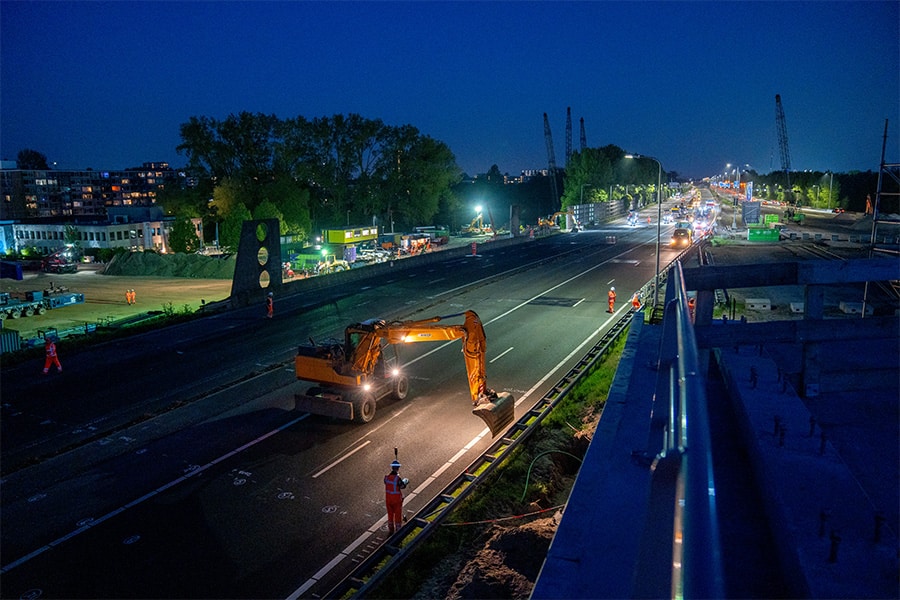
Temporary works of art
A road design depends on curve radii and curves. "If you're going to move a roadway 50 meters it has a huge impact," assures Pieter. "In fact, there was only enough space on the west side to carry that out responsibly and to properly position the required auxiliary bridge (TK58) of 100 meters long by 25 meters wide." The auxiliary bridge is sized so large because the A16 passes artificial structures in a curve. So at the time TK58 was put into operation, part of the existing viaduct was free of traffic. Jaco: "Then, during the long Ascension weekend from May 8 to 13, we closed off traffic northbound so that we could demolish the eastern part of the existing structure. That same weekend, the temporary structure (TK59) was built at this location and driven into the deck, a steel auxiliary bridge over the Hoofdweg that was pre-built by Civil Engineering deBoer in the armpit of exit 27, Prins Alexander. This allowed northbound traffic to use the A16 again early Monday morning, May 13."
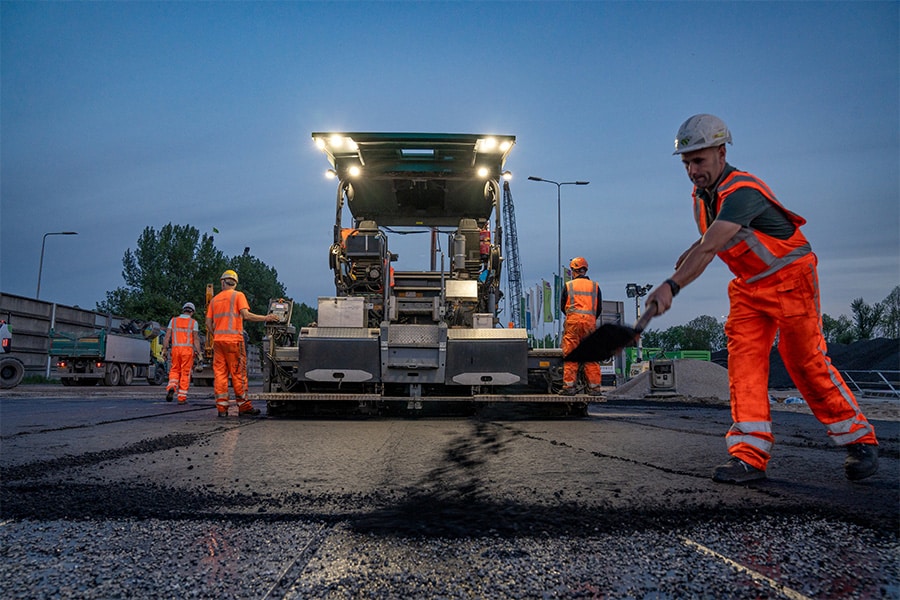
Ascension weekend
Of course, as simple as described above, the operation over the long Ascension weekend was anything but. An awful lot of work had to be done in a span of about 100 hours. "Vlasman first spent a day and a half demolishing the eastern part of the artwork. Then several parties performed all kinds of activities simultaneously, such as installing the pile foundation and welding the steel beams and end plates. Sarens also lifted the precast abutments for deBoer's TK59. The abutments were then anchored with anchor screens. Sarens was then able to drive in the four bridge sections of TK59 using Self-Propelled Modular Trailers (SPMTs). Once moved into position and adjusted, the joint beams were poured with steel fiber concrete and the bearings with in-situ mortar. Finally, the road construction was lifted and realigned and the road relocation was ready for use," Jaco sums up the course of the long Ascension weekend in a nutshell. "And then we also had a challenge due to the high groundwater level. During the jacking of the tubular piles, groundwater came up with them. This is not desirable when welding is also required. By adjusting the sequence of work and using pumps to lower the water level, we were able to manage this unforeseen situation. All in all, a tough but successful weekend for everyone."
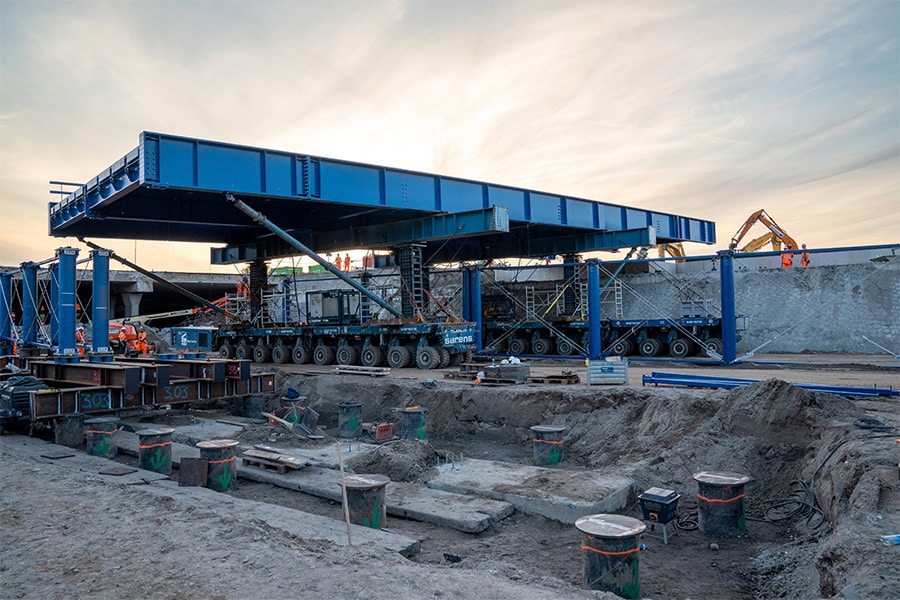
New driveway
TK59 will remain in service for about seven months. That time is needed by De Groene Boog to build the new viaduct on the west side. In fact, the new viaduct will be built in two parts. "From December 2024, we will then divert northbound traffic via a swing over the western part of the new structure," Pieter says. "No traffic will then pass over the eastern auxiliary deBoer bridge, so it can be dismantled. From January through August 2025, we will build the eastern part of the new artwork at this position. According to schedule, traffic in both directions will then cross over to the new viaduct from mid-September 2025." Following this, Retro Bridge's TK58 will be dismantled and the road diversion removed, and ramp 27 from Main Road will also be reinstated. By the end of 2025, the A16 Rotterdam will then be open to traffic, including the new slip road from Hoofdweg towards Delft and The Hague."
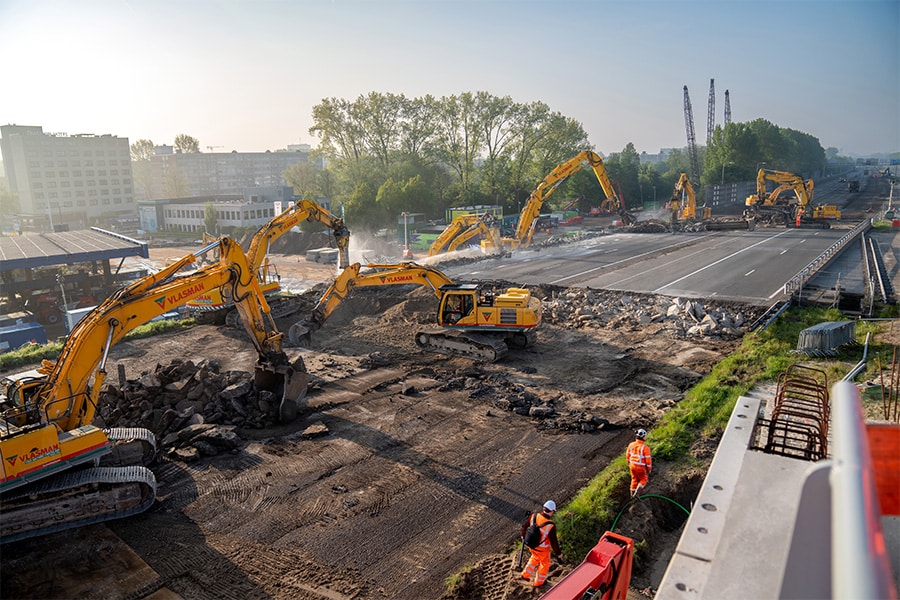
Pressure
The new viaduct will soon consist of two abutments and a center support point. "The abutment will be formed by a combi wall with precast elements and the middle support point by means of precast piles, footings, columns and an underlay beam. Given the high time pressure, it was decided to work with precast elements as much as possible, including the beams for the purpose of the spans," Pieter clarified. "That is all easy to prepare, but of course it all has to fit later. You can't solve much on the job; set tolerances are limited." The structure is characterized by a wide deck of 60 meters in relation to the span of 49 meters. There will be four lanes in both northern and southern direction, while the middle section is intended for the connection with the A16 Rotterdam towards the Terbregseplein viaduct and the Rottemerentunnel. KW58 must therefore be ready to guarantee the opening of the A16 Rotterdam. "It is the final piece of De Groene Boog. When you consider that we have only just put away the demolition hammer, that is quite a challenge," Jaco concludes.
